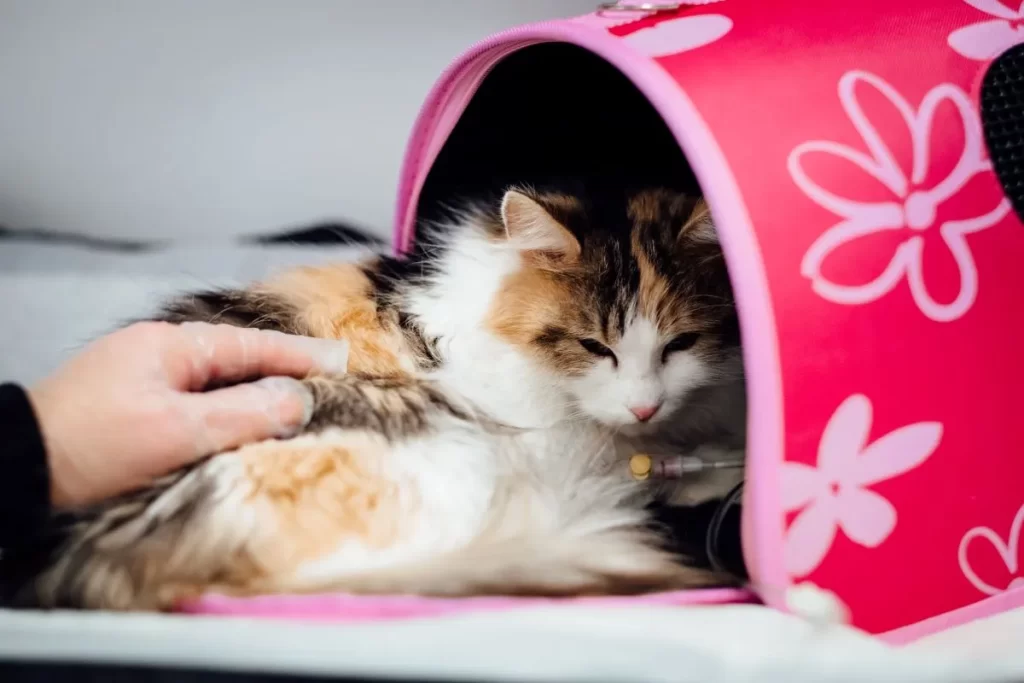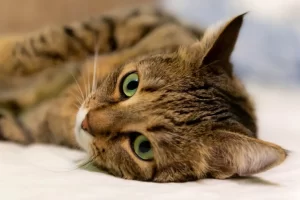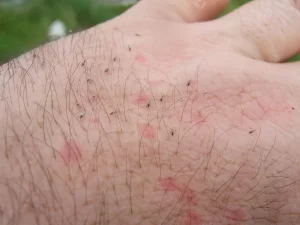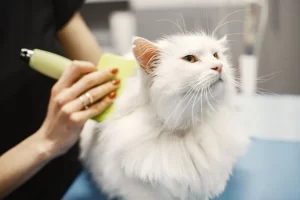Mast cell tumors are a common type of cancer that can affect cats, with varying degrees of severity. While conventional treatments such as surgery, chemotherapy, and radiation therapy can be effective, they can also be expensive and come with potential side effects. As a result, many cat owners and veterinarians are turning to natural remedies for mast cell tumors in cats as a complementary or alternative approach. In this article, we will explore some of the most commonly recommended natural remedies for mast cell tumors in cats, as well as their potential benefits, risks, and limitations.
Table of Contents
ToggleUnderstanding Mast Cell Tumors in Cats
Mast cell tumors are a type of abnormal growth that can develop in cats. These tumors originate from mast cells, which are a type of white blood cell present in the skin and other organs. When mast cells become abnormal and start dividing uncontrollably, they form a mass that can range from small and benign to large and cancerous.
Mast cell tumors can affect cats of any age or breed, although certain breeds may be predisposed. Siamese, Burmese, and Abyssinian cats are among the breeds that have a higher risk of developing mast cell tumors. The tumors can occur anywhere on a cat’s body but are most commonly found on the skin.
Mast cell tumors can cause a variety of symptoms depending on their location and size. Some tumors may appear as a lump or bump on the skin, while others may cause itching, redness, or hair loss in the affected area. In severe cases, the tumors can spread to other parts of the body, such as the lymph nodes, liver, or spleen. It is important to monitor any changes in your cat’s skin or behavior and to have them examined by a veterinarian if you notice anything concerning.
Standard Medical Treatments for Mast Cell Tumors in Cats
Conventional treatments for mast cell tumors in cats typically involve surgery, radiation therapy, and/or chemotherapy. The specific treatment approach recommended by a veterinarian will depend on factors such as the tumor’s size, location, and stage.
Surgery is the most common treatment for mast cell tumors in cats. During surgery, the veterinarian will remove the tumor and a margin of healthy tissue around it to ensure that all cancerous cells are removed. In some cases, a limb or other body part may need to be amputated to remove the tumor completely.
Radiation therapy is another treatment option for mast cell tumors in cats. It involves using high-energy radiation to kill cancer cells and shrink tumors. Radiation therapy may be used before or after surgery, depending on the tumor’s location and size.
Chemotherapy is a systemic treatment that involves the use of drugs to kill cancer cells throughout the body. Chemotherapy may be recommended for cats with advanced or aggressive mast cell tumors or tumors that have spread to other parts of the body.
While these conventional treatments can be effective in treating mast cell tumors in cats, they may also have potential side effects. Surgery can result in pain, bleeding, and infection, and may require a long recovery period. Radiation therapy can cause skin irritation, fatigue, and other side effects. Chemotherapy can cause nausea, vomiting, and immune system suppression. Your veterinarian will discuss the potential risks and benefits of each treatment option with you and help you decide which approach is best for your cat.
Natural Remedies for Mast Cell Tumors in Cats
There are several natural remedies that can be used in addition to conventional treatments for mast cell tumors in cats. These remedies are aimed at supporting the cat’s health and may help to alleviate some symptoms. Here are some categories of natural remedies for mast cell tumors in cats:
- Diet: A healthy diet is essential for maintaining overall health and well-being. It is important to provide your cat with a balanced diet that is rich in nutrients, especially antioxidants. Fresh fruits and vegetables, lean protein sources, and whole grains can provide your cat with essential vitamins and minerals.
- Supplements: Supplements such as omega-3 fatty acids, vitamin C, vitamin E, and beta-carotene can support the immune system and prevent the development of cancer.
- Herbal remedies: Certain herbs such as turmeric, milk thistle, and echinacea have been suggested to have anti-inflammatory and antioxidant properties that may help reduce the growth of cancerous tumors.
- Homeopathy: Homeopathy involves the use of natural remedies made from plant, mineral, and animal sources. It can be used to alleviate symptoms such as pain and inflammation associated with mast cell tumors.
- Acupuncture: Acupuncture is a form of traditional Chinese medicine that involves inserting thin needles into specific points on the body. It may help reduce pain, inflammation, and other symptoms associated with mast cell tumors.
- Massage: Massage can help reduce stress, promote relaxation, and improve circulation, all of which can help support the immune system.
- Environmental changes: Environmental changes such as reducing exposure to toxins and providing a stress-free environment can help support your cat’s overall health.
Note that these natural remedies should not be used as a replacement for conventional treatments. Before trying any natural remedies, it is crucial to consult with your veterinarian to ensure they are safe for your cat and won’t interfere with other treatments they may be receiving.
Supporting Cats with Mast Cell Tumors through Diet
Diet plays a vital role in supporting cats with mast cell tumors. A balanced diet that is rich in nutrients and antioxidants can help support the immune system and overall health. Here are some dietary recommendations that may be helpful:
- High-quality protein: It’s essential to provide your cat with high-quality protein sources, such as chicken, fish, and turkey. These protein sources are essential for building and repairing cells.
- Fresh fruits and vegetables: Fresh fruits and vegetables are excellent sources of vitamins, minerals, and antioxidants. They can help support the immune system and reduce inflammation. Some examples of fruits and vegetables that are safe for cats include blueberries, broccoli, carrots, and spinach.
- Omega-3 fatty acids: Omega-3 fatty acids have been shown to have anti-inflammatory properties and may have a positive effect on reducing the growth of cancerous tumors. Sources of omega-3 fatty acids include fish oil, flaxseed oil, and chia seeds.
- Limited carbohydrates: Cats are obligate carnivores and do not require large amounts of carbohydrates in their diet. Excess carbohydrates can lead to obesity and other health problems.
It’s important to avoid certain foods that can be harmful to cats, including:
- Foods high in carbohydrates: As mentioned above, excess carbohydrates can lead to obesity and other health problems in cats.
- Foods high in sugar: High-sugar foods can lead to obesity and diabetes in cats.
- Processed foods: Processed foods often contain preservatives and additives that can be harmful to cats.
Supplements for Mast Cell Tumors in Cats: Benefits and Dosage
Supplements can be a beneficial addition to a cat’s diet when dealing with mast cell tumors. Here are some supplements that may be helpful:
- Probiotics: Probiotics are beneficial bacteria that can help support the immune system and digestive health. They may help improve overall health and support the body’s ability to fight mast cell tumors.
- Vitamin E: Vitamin E is an antioxidant that may help reduce inflammation and support the immune system. It may also help reduce the growth of cancerous cells.
- Vitamin C: Vitamin C is an antioxidant that may help reduce inflammation and support the immune system. It may also help reduce the growth of cancerous cells.
- Omega-3 fatty acids: As mentioned before, omega-3 fatty acids have anti-inflammatory properties and may have a positive effect on reducing the growth of cancerous tumors.
- Coenzyme Q10: Coenzyme Q10 is an antioxidant that may help reduce inflammation and support the immune system.
When dosing supplements, it’s important to consult with your veterinarian to ensure the proper dosage is being given. Some supplements may interact with medications or other health conditions, so it’s crucial to seek veterinary guidance. Additionally, some supplements may need to be avoided, including:
- Garlic: Garlic can be toxic to cats and can cause anemia.
- Vitamin D: Excess vitamin D can be toxic to cats and may lead to kidney damage.
In summary, supplements can be a beneficial addition to a cat’s diet when dealing with mast cell tumors. Probiotics, vitamin E, vitamin C, omega-3 fatty acids, and coenzyme Q10 are some of the supplements that may be helpful. However, it’s essential to consult with your veterinarian to ensure proper dosing and avoid any supplements that may be harmful to cats.
Herbal Remedies for Mast Cell Tumors in Cats
Herbal remedies can be a helpful addition to a cat’s diet when dealing with mast cell tumors. Here are some herbs that have been shown to have anti-inflammatory and immune-boosting properties:
- Turmeric: Turmeric is a spice that contains a compound called curcumin, which has anti-inflammatory properties. It may help reduce inflammation and inhibit the growth of cancerous cells. It can be used in small amounts in your cat’s food or given as a supplement.
- Milk thistle: Milk thistle is one of the herbs that may help support liver function and reduce inflammation among all other liver-supporting remedies. It may also help reduce the growth of cancerous cells. It can be given as a supplement.
- Astragalus: Astragalus is an herb that may help support the immune system and reduce inflammation. It may also help reduce the growth of cancerous cells. It can be given as a supplement.
- Echinacea: Echinacea is an herb that may help support the immune system and reduce inflammation. It may also help reduce the growth of cancerous cells. It can be given as a supplement.
- Cat’s claw: Cat’s claw is an herb that may help reduce inflammation and support the immune system. It may also have anti-cancer properties. It can be given as a supplement.
When using herbal remedies, it’s essential to consult with your veterinarian to ensure the proper dosage is being given. Additionally, some herbs may interact with medications or other health conditions, so it’s crucial to seek veterinary guidance.
In summary, herbs such as turmeric, milk thistle, astragalus, echinacea, and cat’s claw may have anti-inflammatory and immune-boosting properties, making them potentially beneficial for cats with mast cell tumors. However, it’s essential to consult with your veterinarian to ensure the proper dosing and avoid any interactions with medications or health conditions.
Homeopathic Remedies for Cats with Cancer
A homeopathy is a form of alternative medicine that involves using highly diluted substances to stimulate the body’s healing process. Specific remedies may be useful for cats with mast cell tumors, but it’s important to note that there is limited scientific evidence supporting their effectiveness.
Here are some homeopathic remedies that may be recommended by practitioners for cats with mast cell tumors:
- Apis mellifica: This remedy is made from the venom of honey bees and may be useful in treating swelling and inflammation associated with mast cell tumors.
- Arsenicum album: This remedy may be useful in treating digestive upset and diarrhea that can occur with mast cell tumors.
- Carcinosinum: This remedy is made from cancerous tissue and may be useful in treating cancerous growths, including mast cell tumors.
- Thuja occidentalis: This remedy may be useful in treating skin growths and tumors, including mast cell tumors.
There are several homeopathic products that pet owners may consider using for cats with mast cell tumors, including allerEaze, power probiotics, NOT Drops, Quent Drops, and colloidal silver. AllerEaze is often used for allergies and may help reduce itching and inflammation. Power probiotics may help improve digestive health and boost the immune system. NOT Drops and Quent Drops are both designed to help reduce anxiety and stress. Colloidal silver is a liquid suspension of silver particles that some people believe has antimicrobial and anti-inflammatory properties.
While some pet owners report success with these products, there is limited scientific evidence supporting their effectiveness, and they may not be suitable for all cats. It’s essential to consult with your veterinarian before using any homeopathic product and to follow their guidance regarding dosage and safety. Additionally, it’s important to note that some homeopathic products may be expensive and may not be covered by pet insurance.
For a full list of homeopathic remedies for cats with cancer see here.
Can Acupuncture Help Cats with Mast Cell Tumors?
Acupuncture is a form of traditional Chinese medicine that involves inserting thin needles into specific points on the body to stimulate the flow of energy or “qi.” Some veterinarians may recommend acupuncture as a complementary therapy for cats with mast cell tumors.
Acupuncture may help reduce pain and inflammation associated with mast cell tumors and improve overall well-being. It may also help stimulate the immune system and promote healing. Acupuncture sessions typically last between 20 and 30 minutes, and cats may require several sessions to see significant improvement.
When seeking acupuncture treatment for your cat, it’s important to find a licensed veterinarian who is trained in acupuncture. The practitioner will begin by conducting a thorough physical exam and taking a medical history to determine the best course of treatment. During the acupuncture session, the cat will lie down comfortably while the practitioner inserts small, sterile needles into specific points on the body. The needles may be left in place for several minutes to stimulate the flow of energy.
Acupuncture is generally considered safe for cats, but there may be some risks associated with the procedure. Rarely, cats may experience minor bleeding or bruising at the site of the needle insertion. Some cats may also become restless or agitated during the session.
Massage Therapy for Cats with Mast Cell Tumors: How It Works and Step-by-Step Guide
Massage therapy is a form of hands-on therapy that involves applying pressure and manipulating the soft tissues of the body to improve circulation, reduce tension, and promote relaxation. In cats with mast cell tumors, massage therapy can be a beneficial complementary therapy to help reduce pain, improve circulation, and enhance overall well-being.
When performing massage therapy on a cat with mast cell tumors, it’s important to work gently and avoid applying pressure directly to the affected area. Begin by gently stroking the cat’s fur and gradually increasing the pressure as the cat becomes more comfortable. You can also use circular motions or kneading motions to help release tension in the muscles.
Massage can be performed on any area of the cat’s body, but focus on areas where the cat is most comfortable being touched. The massage session should last between 10 and 20 minutes and can be repeated as often as needed to help manage symptoms.
It’s important to note that massage therapy is not a substitute for medical treatment for mast cell tumors.
Environmental Changes for Cats with Mast Cell Tumors
Environmental changes can help support cats with mast cell tumors by reducing their exposure to potential triggers and stressors that may worsen their symptoms. Here are some recommended changes:
- Reduce exposure to environmental toxins: Avoid using harsh cleaning products, pesticides, and other chemicals around your cat. Choose natural and organic alternatives instead.
- Provide a low-stress environment: Mast cell tumors can be aggravated by stress. Provide a quiet and comfortable environment for your cat, with plenty of hiding places and access to a litter box, food, and water.
- Keep your cat cool: Mast cell tumors can be sensitive to heat. Keep your cat in a cool and well-ventilated area, especially during hot weather.
- Use hypoallergenic bedding: Some cats may have allergies that can worsen their symptoms. Use hypoallergenic bedding and avoid materials such as wool or down that may trigger allergies.
- Provide a balanced and nutritious diet: A healthy diet can help support your cat’s immune system and overall health. Consult with your veterinarian for recommendations on the best diet for your cat with mast cell tumors.
- Consider an air purifier: An air purifier can help reduce allergens and pollutants in the air, which can be beneficial for cats with mast cell tumors.
- Avoid exposure to other sick animals: Mast cell tumors can weaken the immune system, making cats more susceptible to other illnesses. Avoid exposing your cat to other sick animals, and keep them up to date on vaccinations and preventive care.
These environmental changes can be implemented gradually to help reduce stress and provide a supportive environment for your cat with mast cell tumors.
Preventing Mast Cell Tumors in Cats: Importance of Regular Checkups and Preventative Measures
While there is no guaranteed way to prevent mast cell tumors in cats, there are some steps that can be taken to reduce the risk and catch any potential tumors early. Regular checkups and early detection can greatly improve treatment outcomes. Here are some recommended prevention steps:
- Regular checkups: It is important to bring your cat for regular checkups with a veterinarian, especially as they age. During these checkups, the veterinarian can perform a physical examination, blood tests, and other screenings to detect any abnormalities or potential tumors. Read more on How often should I take my cat to the vet?
- Avoid exposure to environmental toxins: As mentioned before, exposure to environmental toxins, such as pesticides and chemicals, can increase the risk of tumors. Avoid using these products around your cat whenever possible.
- Healthy diet: A healthy diet can help support your cat’s immune system and overall health, which may reduce the risk of developing tumors. Consult with your veterinarian for recommendations on the best diet for your cat.
- Maintain a healthy weight: Overweight cats may be at a higher risk of developing tumors. Keep your cat at a healthy weight by providing regular exercise and a balanced diet.
- Monitor any lumps or changes: If you notice any lumps or changes on your cat’s skin or in their behavior, bring them to the attention of your veterinarian immediately. Early detection and treatment can greatly improve the outcome.
By taking these steps, you can help reduce the risk of mast cell tumors in cats and catch any potential tumors early.
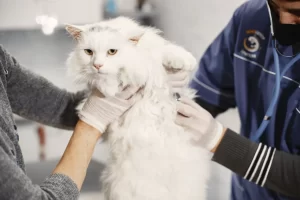
Diagnosing Mast Cell Tumors in Cats: Types of Diagnostic Tests and Procedures
Mast cell tumors in cats are typically diagnosed through a combination of physical examination, blood tests, and diagnostic imaging. Here are some of the diagnostic tests that may be used:
- Physical examination: A veterinarian will perform a thorough physical examination of your cat, feeling for any lumps or abnormalities in the skin or lymph nodes. They may also check for other signs of illness, such as lethargy or weight loss.
- Fine needle aspirate (FNA): FNA is a minimally invasive test in which a small needle is inserted into the lump to collect a sample of cells for examination under a microscope. This test can help determine whether the lump is a mast cell tumor and, if so, the grade and severity of the tumor.
- Biopsy: A biopsy involves removing a small piece of tissue from the lump to examine it under a microscope. This is a more invasive procedure than FNA, but it may be necessary for a more accurate diagnosis and to determine the extent of the tumor.
- Blood tests: Blood tests can help determine if there are any abnormalities in your cat’s blood cells or organ function. Abnormalities may suggest the presence of a tumor.
- Diagnostic imaging: X-rays, ultrasounds, and other imaging tests may be used to determine the location and extent of the tumor, as well as whether it has spread to other parts of the body.
Overall, the diagnosis of mast cell tumors in cats involves a combination of physical examination, laboratory tests, and diagnostic imaging. The results of these tests can help determine the best course of treatment for your cat.
Staging Mast Cell Tumors in Cats: Treatment Options Explained
Staging of mast cell tumors in cats involves assessing the extent and spread of cancer, which can help guide treatment decisions. There are several staging systems used in veterinary medicine, but the most commonly used is the World Health Organization (WHO) staging system.
The WHO staging system categorizes mast cell tumors in cats into three stages based on the size of the tumor and the presence of metastasis (spread to other areas of the body):
- Stage I: Small tumor with no spread to other parts of the body
- Stage II: Large tumor with no spread to other parts of the body
- Stage III: Any size tumor with evidence of spread to lymph nodes or other organs
Staging is typically performed through a combination of diagnostic imaging, such as ultrasound or X-rays, as well as fine needle aspiration or biopsy to confirm the diagnosis and assess the tumor’s characteristics.
The stage of the tumor is an important factor in determining the appropriate treatment plan. Generally, surgical removal of the tumor is the preferred treatment for localized mast cell tumors. However, radiation therapy or chemotherapy may be necessary in cases of more advanced tumors or tumors that have spread to other areas of the body. Treatment plans should be tailored to each individual cat’s needs and overall health.
Integrative Care for Cats with Mast Cell Tumors
Integrative care may involve a combination of therapies such as dietary modifications, nutritional supplements, acupuncture, massage therapy, and herbal remedies to support the cat’s immune system, reduce inflammation, and improve overall health.
One of the primary benefits of integrative care is that it can help manage the side effects of conventional treatments such as chemotherapy and radiation therapy. Complementary therapies such as acupuncture and massage can help reduce pain and improve the quality of life for cats undergoing these treatments.
Integrative care also takes into account the emotional and mental well-being of the cat and can involve techniques such as behavior modification, stress reduction, and environmental enrichment to reduce anxiety and improve the overall quality of life. For a full list of natural remedies that can help cats with anxiety, click here.
Adverse Reactions to Natural Remedies for Mast Cell Tumors in Cats
Although natural remedies can be beneficial for cats with mast cell tumors, there is a potential for adverse reactions. Some herbs and supplements may interact with medications or may be toxic at high doses. It’s important to discuss any natural remedies with your veterinarian before giving them to your cat.
Some common adverse reactions to natural remedies include gastrointestinal upset, allergic reactions, and toxicity. To avoid adverse reactions, always follow dosing instructions carefully, and monitor your cat closely for any signs of discomfort or unusual behavior. If you notice any adverse reactions, stop giving the natural remedy and contact your veterinarian immediately. It’s also important to use high-quality, pure products and to store them in a safe place where your cat cannot access them.

